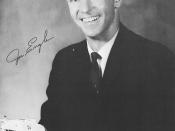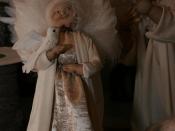It was a normal day at school in Hyde Park, New York. The class had just finished the pledge of allegiance and took their seats. At their desks, the children clasped their hands together and bowed their heads as their teacher recited a prayer. On this particular day in 1958, Steven Engel, a Jewish man, visited his son's classroom. "I saw one of my children with his hands clasped and his bead bent. After I asked him, 'What were you doing?' He said, 'I was saying my prayers.'" (DeWan, 1). That incident was the start of a battle against school prayer that would lead to a Supreme Court decision.
The prayer read in the classroom was Regents-sponsored, school board approved, and nondenominational; children were not required to say or pray it. A letter was sent to every taxpayer and parent in the school district explaining what the prayer would include and that everyone was not forced to say it.
Upon written request of a parent, a child could be excused from the room while the prayer was said. During the court case, it was said, "â¦A child is free to stand or not stand, to recite or not recite, without fear of reprisal or even comment by the teacher or any other school official" (Full Text, 10). Children could choose to remain quiet or even leave the classroom.
The Engel vs. Vitale case, also called the School Prayer Decision, involved a simple twenty-two-word prayer composed by the New York State Board of Regents (a state agency that had extensive power over the state's public schools). The Regents recommended this prayer to all school boards throughout the state in an attempt to develop a language that would be inoffensive to all faiths (Fenwick, 130). The prayer said, "Almighty God, we acknowledge...

